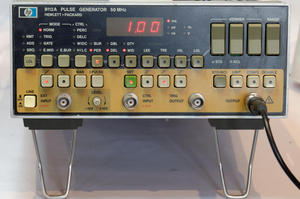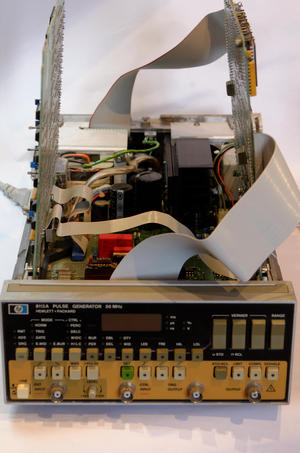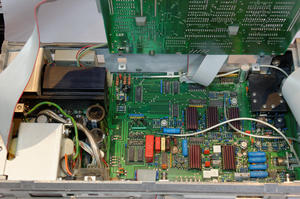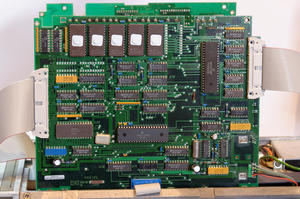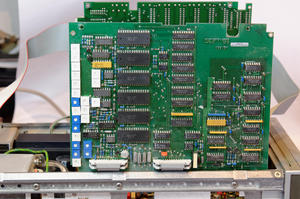HP8112A Pulse Generator
In 1983, HP introduced a new range of HPIB programmable pulse/function generators that had been developed by HP's German engineers in Böblingen. Model 8112A was the dedicated 50 MHz pulse generator.
In the 811x series, HP used custom-developed bipolar analog ICs for signal generation and shaping, which basically all happened in analog circuits controlled by a processor through a number of D/A converters. All parameters including rise and fall times are programmable via the HPIB, and some can also be controlled via a control voltage through a front panel input, e.g. 0–10 V → 0–100% pulse width. Because of the analog signal generation, however, timings are not as precise as one might expect (think R/C circuits, not crystals).
The manuals for the 8112A, like so many others, can be downloaded from Didier's Site (KO4BB) (Thanks!) There is also a nice description of the unit (in German) at amplifier.cd which shows some of the waveforms that can be obtained.
The 8112A is a nice, compact unit, which means that since it is built with 1980s technology, the interior is rather packed. The base board contains signal generation and output stages, the middle board is essentially a multi-channel D/A, and the top board contains the CPU, display/keyboard control, and HPIB interface. The boards are interconnected through ribbon cables. For troubleshooting and calibration, the middle and top boards can be placed upright.
Troubleshooting
The unit pictured is from an early production run, having two 1k × 4 NMOS RAMs and a NiCd battery to supply them. Side note – the 8112 Service Manual contains what must be the most complex and long backdating chapter in any HP instrument manual I'm aware of. Did HQ neglect to teach the German engineers the concept of "good enough"? :-)
The dead NiCd had leaked and of course created quite a mess on the board. Despite a comprehensive cleanup, some corrosion can still be seen on the pins of R11.
The unit failed intermittently but responded to "percussive maintenance". The source was not hard to find since the CPU board supply was missing, but hard to believe: The power supply wires to the CPU board (visible bottom right next to the battery space) had corroded to the point of breaking. Why did they use these thin wires in the first place ...? (The chap who had sold this one on ebay was rather surprised to hear the 8112 worked reliably. Didn't expect that on a "working" unit, did you? Suffice it to say there was no further reply ...)
